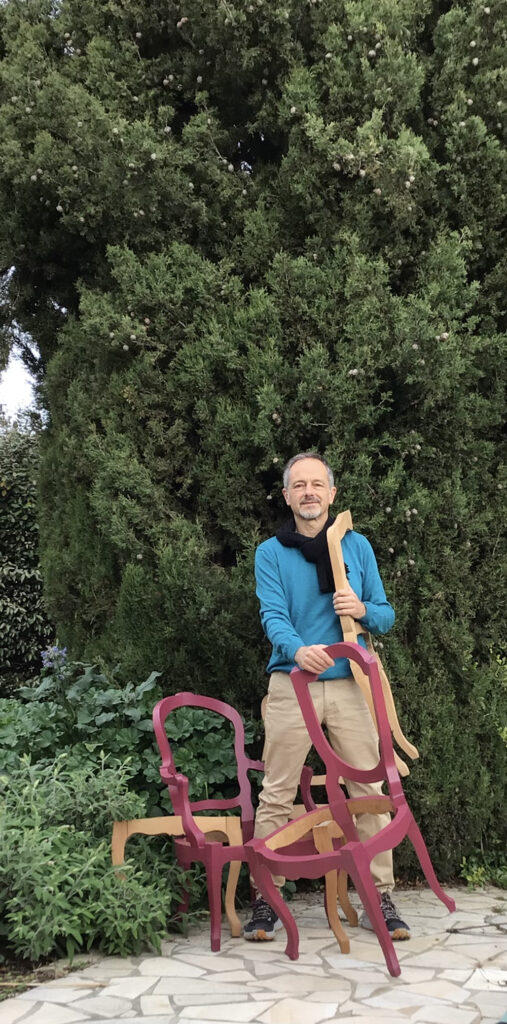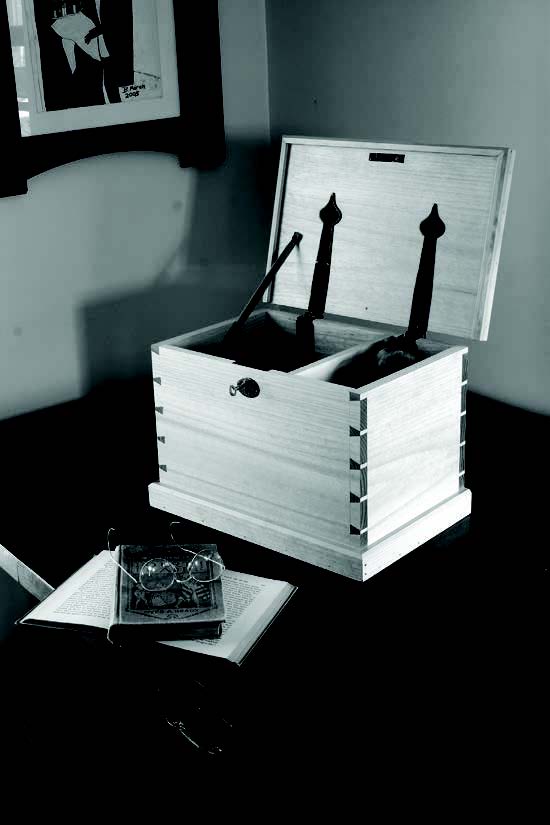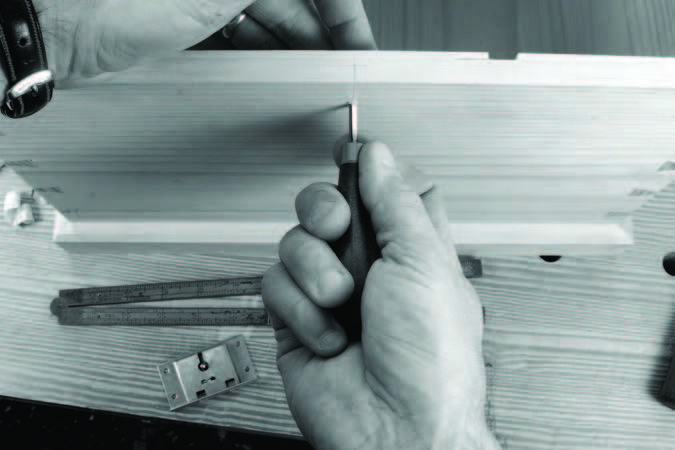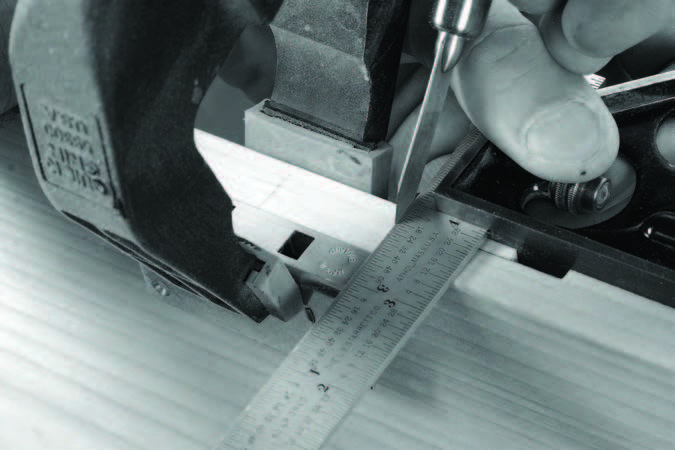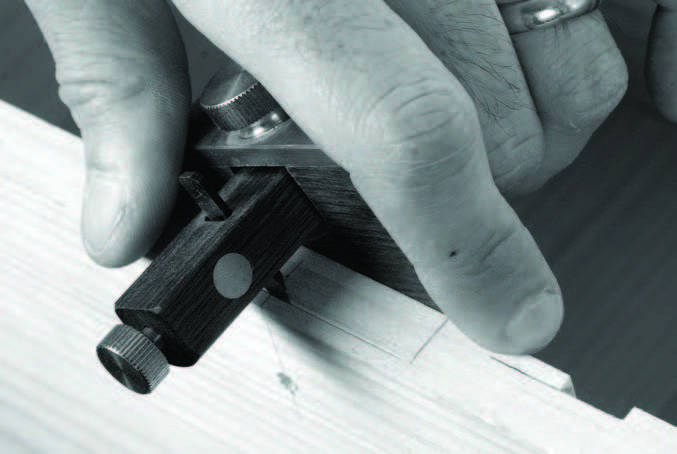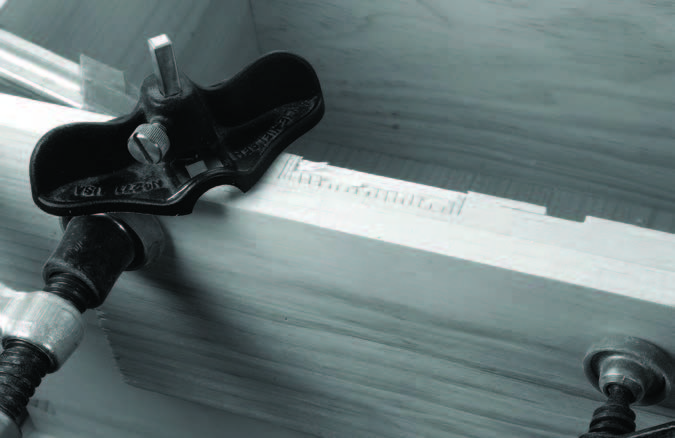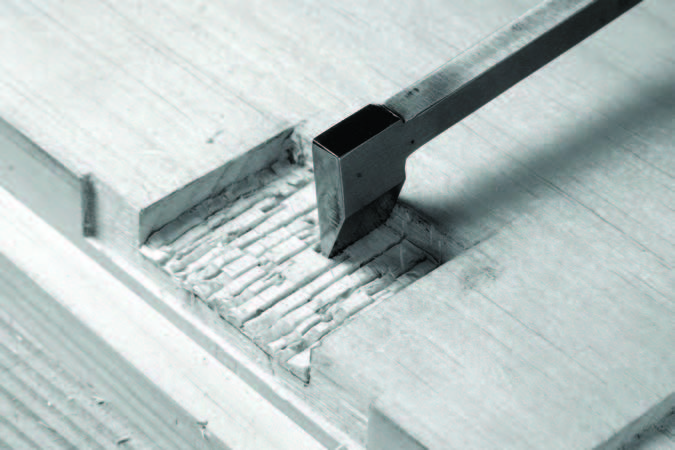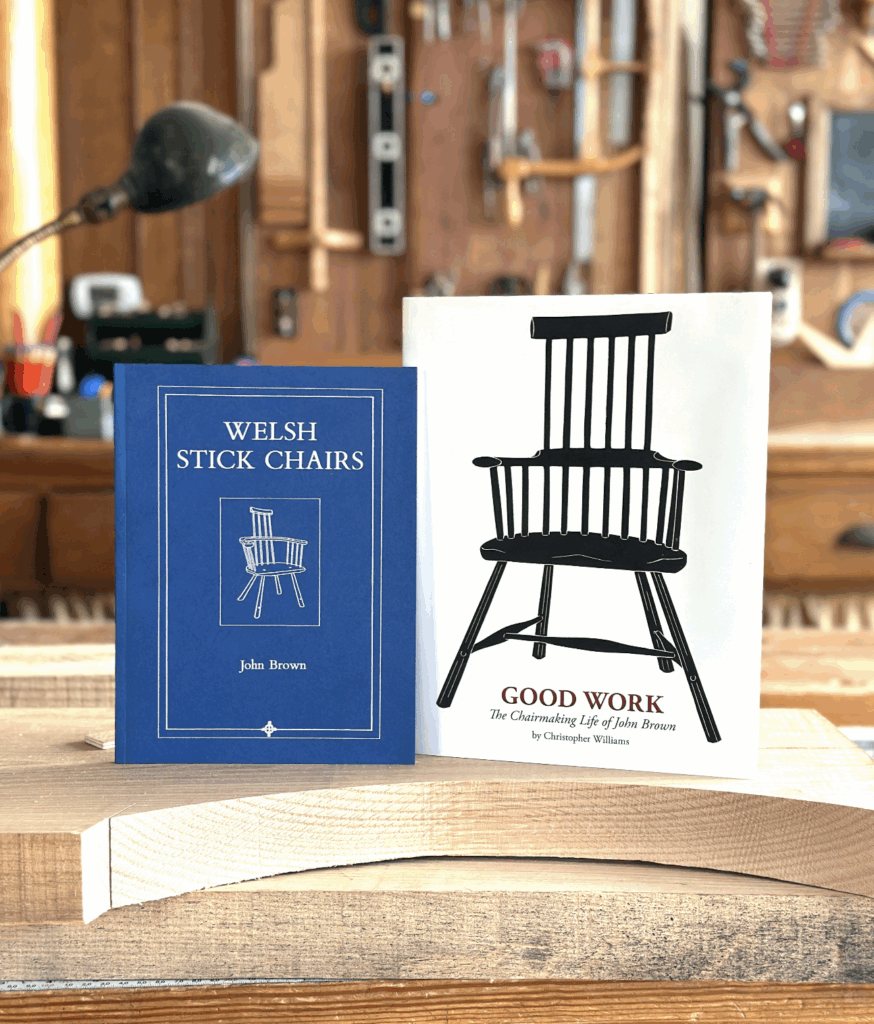
The following is excerpted from “Backwoods Chairmakers,” by Andrew D. Glenn. Part travelogue, part profile and part how-to, “Backwoods Chairmakers” explores the tradition of the enduring Appalachian ladderback form. Glenn takes you inside the shops of more than 20 makers, with photos and personal interviews about their lives and techniques.
We sat for a moment before deciding what to do. My host and guide, furniture maker Alf Sharp, made the proper choice by staying in the car, which sat in an open yard and was clearly visible in the driveway beside the house. I opened the car door and started toward the front door.
We knew a chairmaker lived nearby. We had just left a visit with Cannon County, Tennessee, chairmaker, and he pointed us in this general direction. He told us another chairmaker lived on this lane. The yard showed all the common characteristics of a chairmaker residing here.
I was met by a large dog as I rounded the corner of the house. Calm and without agitation, he blocked my path to the door. I stood, frozen, in the front yard for a few moments. His vibe made it clear that I should not come any closer. I began slowly backpedaling to the car, looking forward toward the dog yet not into his eyes. I was 50 feet from the car and hoped he would allow me to leave. He followed me on my left side the entire time, a few steps away and without any change in his demeanor, until I found my car door and got back in.
He’d done his job, just as I attempted mine. After a few deep breaths, Alf and I were off again, looking for the next property with a shop around back and timber piled about the yard.
•••
It was the mystery behind it all that first attracted me to these chairs.
Our family had recently moved to Berea, Kentucky, so I could join the college and craft community in the small town in the west-most foothills of Appalachia. When we arrived, we didn’t know much about the place, and we had a significant time of discovery and adjustment.
I went about learning the woodworking traditions of central and eastern Kentucky. Ladderback chairs were a natural interest, and they were abundant. The chairs are staples at flea markets, coffee shops, junk stores, galleries and garage sales. Most were older chairs, sometimes spray painted blue or pink to match a child’s room, yet some were the current work of contemporary chairmakers. Many were mass-manufactured, with bulky proportions and aheavy finish. But interspersed among the forgettable were the idiosyncratic and charming handmade chairs, with drawknife marks evident on the slats and posts. This clue suggested there was once a considerable collection of hand-tool chairmakers in this region. My sense was that they were all gone, but there was no way to know.
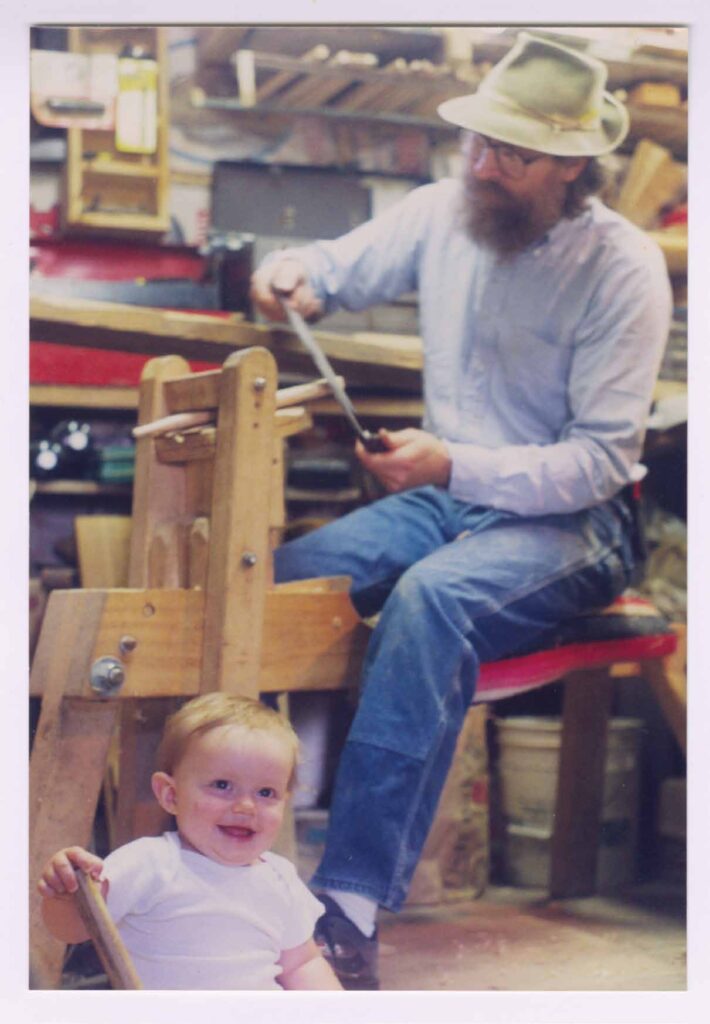
Before arriving in Kentucky, I knew the chairs of Chester Cornett: giant, bombastic handmade rockers, along with the charming, well-proportioned settin’ chairs of his youth. Chester worked into the 1970s, shaping his chairs with hand tools and, as his work changed, a small collection of power tools. It wasn’t contemporary work, but it wasn’t in the distant past either. Was it possible that chairmakers still worked this way? Chester lived in poverty while making his chairs decades back, and I figured it’d only gotten tougher to make a living since then.
Eventually, the idea that chairmakers in central Appalachia were still making chairs proved too enticing to ignore. I began asking the long-established craftspeople around town if they knew of any remaining chairmakers. Friend and long-time Berea dulcimer maker Warren May shared his dog-eared Kentucky Guild Craft Festival catalog from 20 years earlier and pointed out the name of an Eastern Kentucky chairmaker. Here was my chance to connect, if the phone number from the 1990s still worked.
I sheepishly called that evening, not even sure what to ask, other than to introduce myself and ask to visit his shop. He generously welcomed me and offered his guest room for an overnight stay.
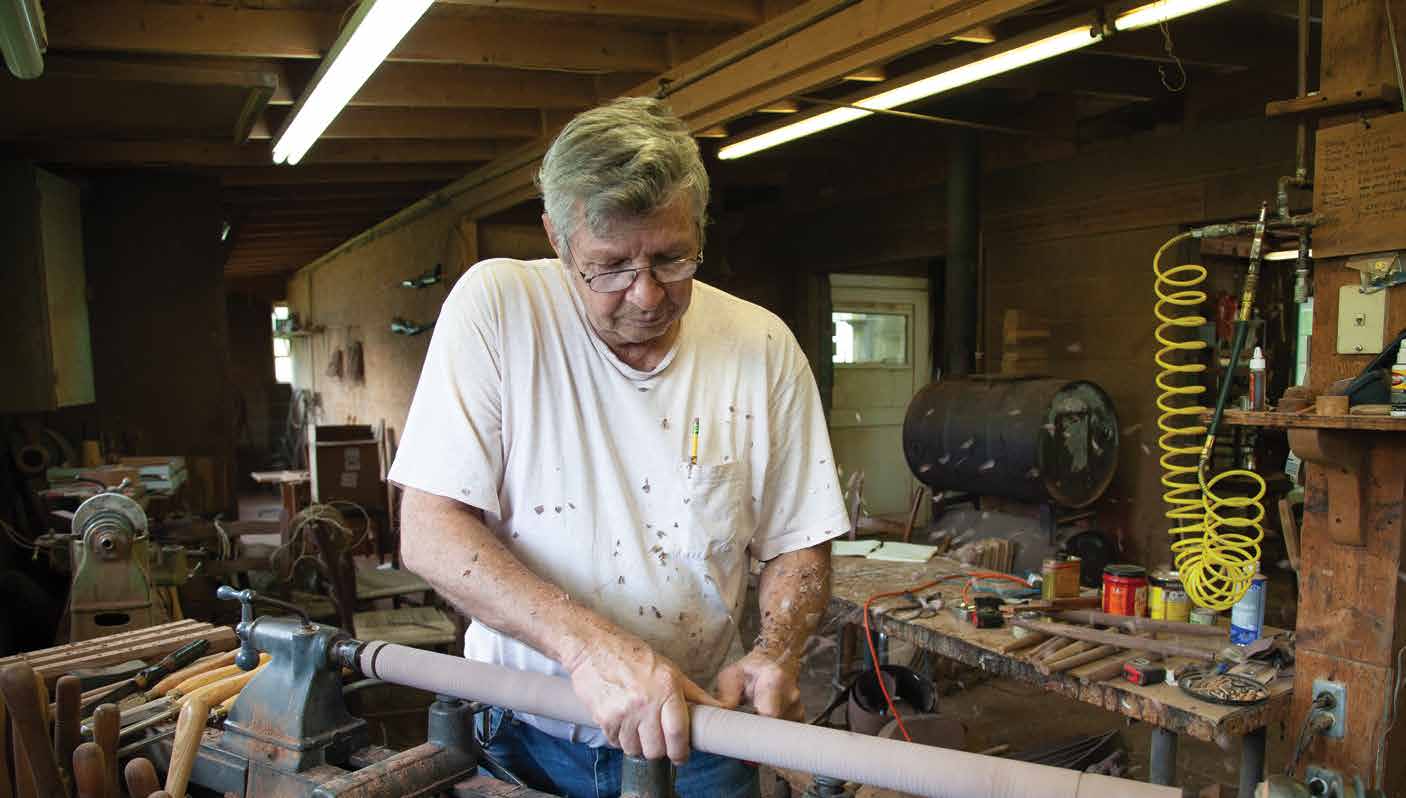
post in his shop, at the same lathe his father once worked.
A few weeks later I drove east, fully aware of my ignorance, both in making backwoods chairs and mountain culture. I was, however, fully aware of the history of exploitation of the region. People from away – the timber and coal industries especially – took from mountain communities with little regard for its people. They extracted resources and profit, then moved along. Despite this history of abuse by outsiders, the chairmaker welcomed me.
When I arrived, I realized that I’d overdressed. I was immediately given the good-natured nickname “professor” for my association with the college, the pencils in my shirt pocket and my khakis. Then we got down to business and ventured into the woods on the steep mountainside to gather material. I fumbled along as we split and shaped a fallen ash log into chair posts. I lost my footing on the slope and clumsily hacked at the work, instantly huffing and muttering as we drove wedges into the log. I’d built plenty of chairs in the shop, but this required a different skill set.
Though I was out of place, we connected through the language and love of chairs. And that’s precisely where we stayed, sharing stories of chairmaking, asking questions, listening and learning.
I left at dusk the next evening, hoping to find the main road before nightfall. I had built (with substantial help) my first mountain chair.
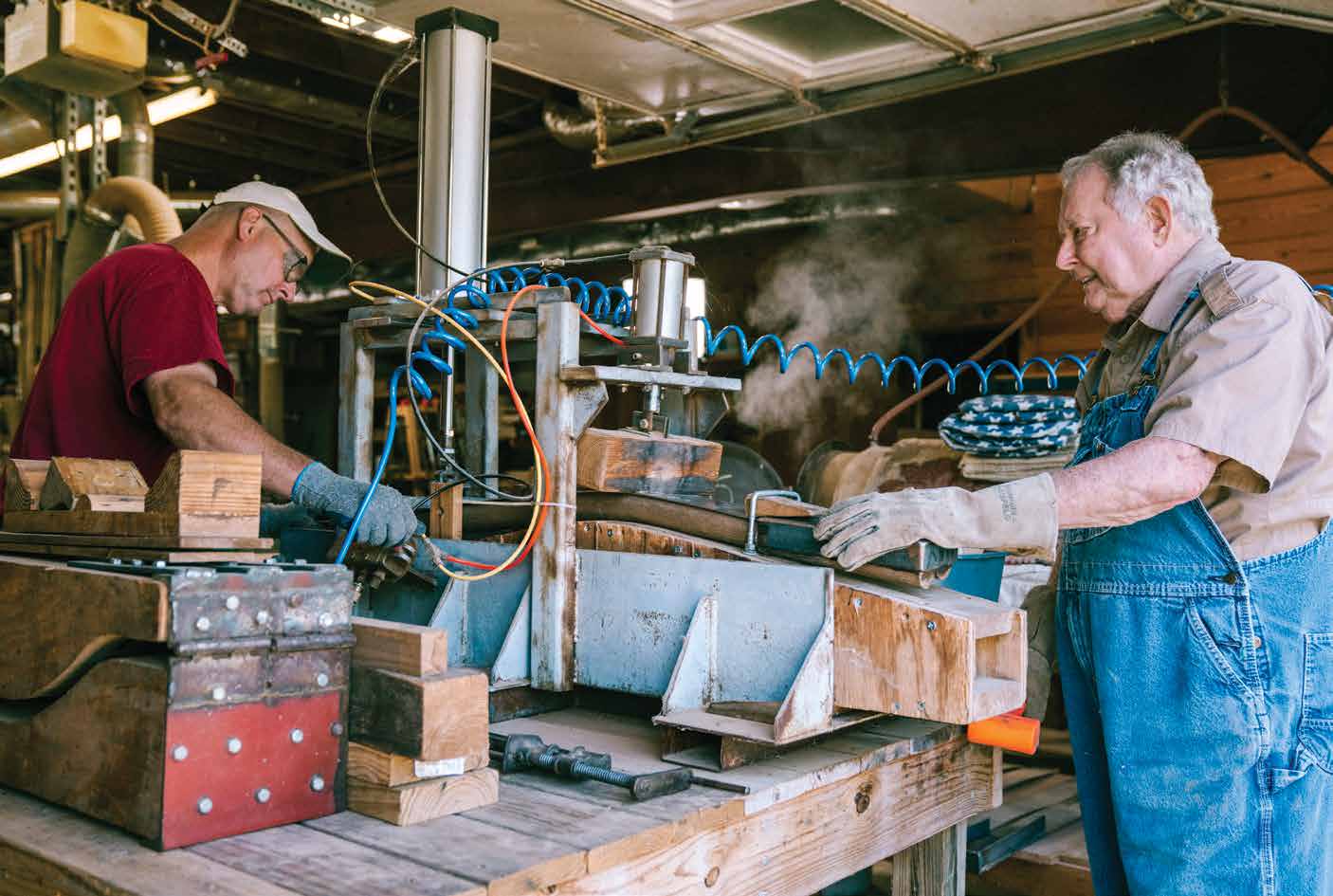
into the bending form. Photo by Victor Sizemore.
Once I reached the monotony of highway driving, my mind returned to the events of the last two days. There was an immense beauty to the work that I had not experienced before. The chairmaker, on his ridge, working in the open air as much as in his shop. Life and work intertwined. A deeply held appreciation for the timber and his place within his community.
He took the trees around him and made them into chairs and furniture with a collection of prized hand tools and a couple machines. There was a symmetry and balance to it all.
That first visit was the spark that led to this project.
I wondered if there were enough working ladderback chairmakers around still to write more than a few chapters. A fellow woodworker suggested that I was “chasing ghosts,” and that I might need to resort to writing historical fiction. That was my fear as well, that Appalachian post-and-rung chairmaking was a thing of the past.
While it appears that the roaring flame of traditional Appalachian chairmaking has dwindled, it is in no danger of going out. Gone are the days of multiple chairmakers in every county, providing for the needs of their communities. Yet the old ways are not forgotten. The tradition is not dead. It has adjusted and adapted to the times.
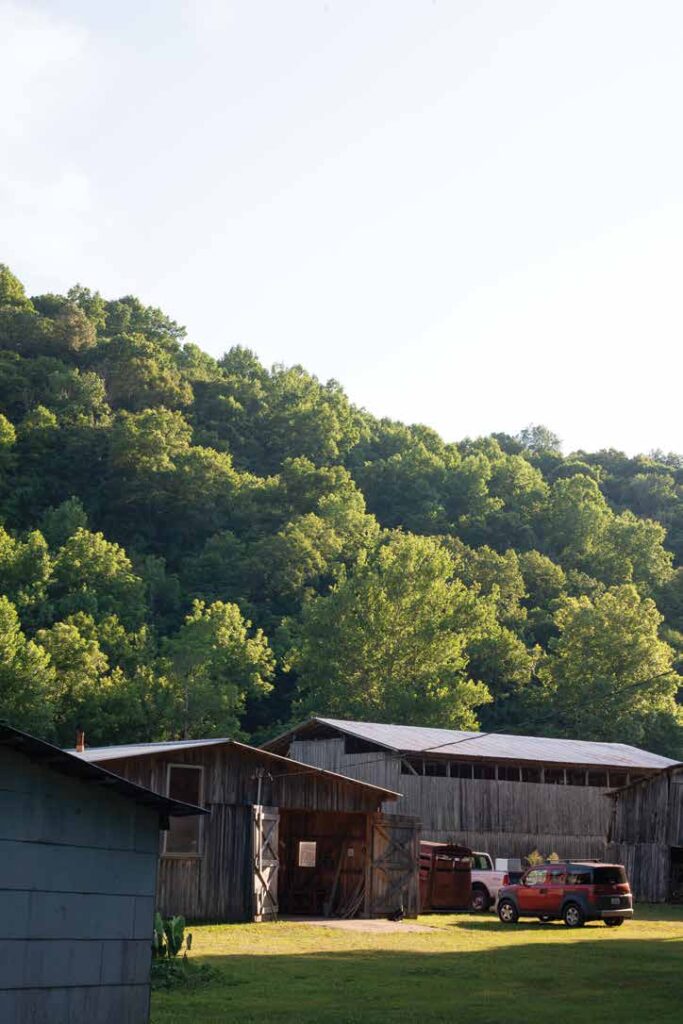
Red Boiling Springs, Tennessee.
I sought chairmakers who derived income (either part or whole) for their livelihood and who made post-and-rung chairs. The focus is on central Appalachia, though some stories lead far from the region. Most of the makers in this book are still making chairs, or nearing retirement, though there is mention of a couple renowned makers of the past – Dick Poynor and Chester among them.
There are more chairmakers working within central Appalachia than the ones mentioned here; I am confident in that. While I chased down untold leads in the search for chairmakers, there was no way I could follow all of them. The makers are decentralized and disconnected from one another. This leads to beautiful, unique chairs, but it also makes them very hard to find.
It was apparent during the conversations and visits with the chairmakers that this tradition is not nearing extinction. Post-and-rung chairs still have much to offer anyone who wants to build them: a closeness to the land and material, creative expression, a connection to the community, the ability to create a cottage industry – along with doing hard, physical work and the independence that comes from being a craftsperson. Chairmaking, in this way, is more than an occupation. It is a way of life.
It didn’t take a professor to recognize the beauty in it all.

